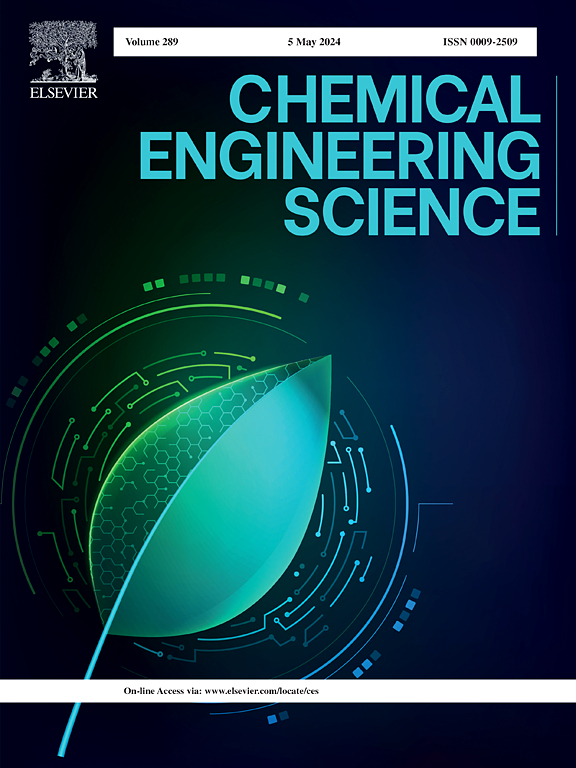掺 La 的 MnCo2O4.5 改性 Ti/SnO2-Sb2O4/PbO2 阳极用于提高锌电积的电化学性能
IF 4.1
2区 工程技术
Q2 ENGINEERING, CHEMICAL
引用次数: 0
摘要
锌电积中使用的传统铅-银阳极具有较高的氧进化反应(OER)过电位和较差的机械强度,导致能耗较高。为了克服这些缺点,本研究制备了 Ti/SnO2-Sb2O4/PbO2-La 掺杂 MnCo2O4.5 复合阳极。在含有 50 g L-1 Zn2+ 和 150 g L-1 H2SO4 的酸性介质中,它的电化学性能得到了增强,达到 50 mA cm-2 的基准电流密度需要 565 mV,Tafel slop 为 179.79 mV dec-1。根据 XPS 的结果,Mn4+ 和 Co3+ 的含量增加,有利于提高电极的 OER 催化活性。与传统的 Pb-0.76% Ag 阳极相比,电流效率提高了 1.7%,从而显著降低了生产一吨锌的能耗 477.46 kW∙h。此外,Ti/SnO2-Sb2O4/PbO2-La 掺杂的 MnCo2O4.5 阳极表现出优异的耐腐蚀性,在 2 A cm-2 的条件下,加速服务时间延长至 50 h。中间层和掺 La 的 MnCo2O4.5 粉末的引入延长了电极的使用寿命。因此,这项研究为制备具有更强电化学性能的阳极提供了一种新的策略,该阳极可应用于锌电积等方面。本文章由计算机程序翻译,如有差异,请以英文原文为准。
La-doped MnCo2O4.5 modified Ti/SnO2-Sb2O4/PbO2 anode for enhancing the electrochemical performance in zinc electrowinning
The traditional Pb-Ag anodes used in zinc electrowinning exhibit high overpotential for oxygen evolution reaction (OER) and poor mechanical strength, leading to high energy consumption. To overcome the shortcomings, Ti/SnO2-Sb2O4/PbO2-La-doped MnCo2O4.5 composite anode was prepared by this work. It demonstrated enhanced electrochemical performance, requiring 565 mV to reach the benchmark current density of 50 mA cm−2, and the Tafel slop of 179.79 mV dec–1 in the acidic media containing 50 g L–1 Zn2+ and 150 g L–1 H2SO4. According to the results of XPS, the content of Mn4+ and Co3+ increased, which was beneficial to promote the OER catalytic activity of the electrode. The current efficiency was improved by 1.7 % compared with traditional Pb-0.76 % Ag anode, resulting in a significant reduction in energy consumption of 477.46 kW∙h for producing one ton of zinc. Moreover, the Ti/SnO2-Sb2O4/PbO2-La-doped MnCo2O4.5 anode showed excellent corrosion resistance, and the accelerated service time was extended to 50 h at 2 A cm−2. The service life of the electrode was extended thanks to the introduction of the intermediate layer and La-doped MnCo2O4.5 powder. Therefore, this work provided a novel strategy to prepare the anodes with enhanced electrochemical performance applied in zinc electrowinning and other aspects.
求助全文
通过发布文献求助,成功后即可免费获取论文全文。
去求助
来源期刊

Chemical Engineering Science
工程技术-工程:化工
CiteScore
7.50
自引率
8.50%
发文量
1025
审稿时长
50 days
期刊介绍:
Chemical engineering enables the transformation of natural resources and energy into useful products for society. It draws on and applies natural sciences, mathematics and economics, and has developed fundamental engineering science that underpins the discipline.
Chemical Engineering Science (CES) has been publishing papers on the fundamentals of chemical engineering since 1951. CES is the platform where the most significant advances in the discipline have ever since been published. Chemical Engineering Science has accompanied and sustained chemical engineering through its development into the vibrant and broad scientific discipline it is today.
 求助内容:
求助内容: 应助结果提醒方式:
应助结果提醒方式:


